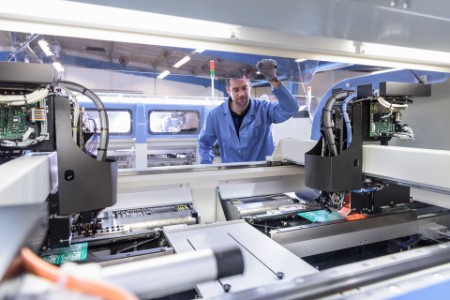Industry 4.0, the fourth industrial revolution, is remaking the auto industry with disruptive technologies such as blockchain, AI, and more.
We are in the fourth industrial revolution. Industry 4.0 is not simply a buzzword or a term thrown around by the Davos crowd: it is affecting every sector and every business operating today, and the automotive industry is no exception.
Industry 4.0 is an integration of the physical, biological and digital worlds, built on a base of emerging technological breakthroughs including autonomous capabilities, artificial intelligence, the Internet of Things (IoT), next-generation wireless technologies, nanotechnology, big data, blockchain and cloud computing. Some of this technology is in use today — on a mass scale, or just emerging and being tested. Others, such as blockchain and cutting-edge autonomous capabilities, are in their infancy and not widely adopted or understood.
The pace of change is becoming more rapid. Customer expectations are higher and seemingly ever-increasing. At the same time, demand is becoming more and more volatile. For example, say a photograph of a celebrity wearing a particular brand goes viral, or a social media influencer makes a video about a particular cosmetic. Sellouts in these cases may seem almost instantaneous. Unconventional channels are creating disruption and impacting supply chains in a matter of hours, not months.
While these examples are retail-focused, they demonstrate how disruption impacts global supply chains. To operate in this more-volatile environment with an entirely different dynamic, we need to embrace new capabilities that enable greater agility.


